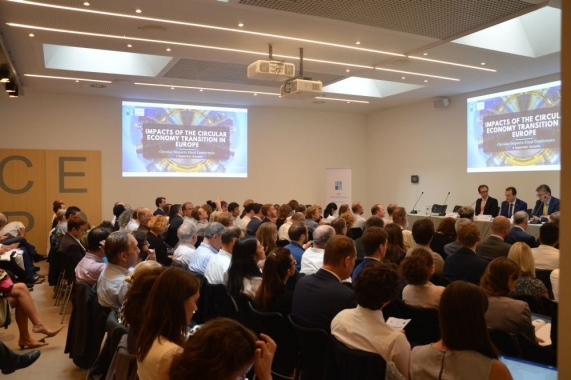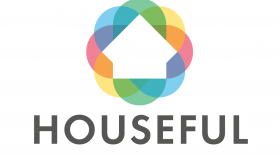Circular Economy takes center stage
The inevitable connection with the housing sector
Brussels, 6 September 2018 | Published in Energy, Economy
Housing Europe Research Assistant, Mariel Whelan attended the Final Conference of the Horizon2020 project Circular Impacts, led by partners CEPS Energy Climate House, EcoLogic Institute, Wageningen University, in the CEPS building in Brussels on September 5th 2018.
The Circular Impacts project was a 3-year Horizon 2020 project (now completed), assessing the impact of the transition to the circular economy in Europe. Specifically, the project collected data on current trends and evidence, conducted four case studies (looking at electric vehicle battery recycling, car sharing in Germany, concrete recycling in France and phosphorous recycling from manure), and developed various scenarios to estimate the impacts of mainstreaming. More info can be found here.
For those as yet uninitiated - the circular economy is a circular model in which the value of products and materials is maintained for as long as possible; waste and resource use are minimised, and resources are kept within the economy as when a product has reached the end of its life, to be used multiple times to create further value. It currently accounts for 9% of the entire global economy, and many speakers and voices from the floor spoke of a desired target of 100%, a fully closed global loop. Short-term, medium-term and long-term measures include eradicating land-fill usage, extending uses of cycled CDW (Construction and Demolition Waste) and developing “Design for Deconstruction” or “Design for Future” approaches.
The high-level of attendance and robust discussion during the Q&As of the high-policy event shows the level of interest and attention that this topic inspires.
Speakers from EASME (Executive Agency for Small and Medium Enterprises), DG Environment, DG GROW, the OECD, Netherlands Economic Observatory and the EEB (European Environmental Bureau) and attendees deliberated on questions and issues such as: whether it is possible to decouple GDP and resource extraction, the structural changes needed in production and consumption, the connection between resource/material usage and energy usage (is it always true that an increase in one necessitates a decrease in the other, and vice versa?), who are the drivers in the sharing economy and where are the policy levers?, to name just a few.
Attendees learned that engagement in and impacts of the circular economy will be considered in upcoming European Semesters, though not as “hard-core” recommendations as part of the Country Specific Reports. Also, many studies on the circular economy do not in fact consider future scarcity of resources in their baseline, which prompted dynamic discussions on what should be considered: welfare, geopolitics, migration, economic stability, poverty, life satisfaction?
The connection with housing should be clear – construction and production of buildings and infrastructure make up for a large, if not, the largest portion of the global resource footprint. The most relevant presentation for those in the housing sector was that on concrete recycling. Concrete is the second most popular material in the world, after water, and currently, most concrete from CDW (Construction and Demolition Waste) is cycled into RCA (Recycled Concrete Aggregates) which is then mostly down-cycled into roads, or re- or up-cycled into ready-mix concrete. More research is needed to identify further benefits, define liabilities and boost reputation. A report on the case-study can be found here.
The HOUSEFUL project, which started this May and of which Housing Europe is a partner, looks specifically at housing and the circular economy. In particular, the Horizon2020 project will develop and demonstrate an interactive repository of new Circular Economy Business Opportunities (CEBO) - integrated circular services focussed on the optimal management and use of water, waste, energy and material resources during all stages of the life cycle of residential buildings (new and existing).
11 HOUSEFUL Solutions will be demonstrated at large scale in 4 different residential buildings in Spain and Austria:
- An innovative methodology for the quantification of building circularity.
- A co-creation methodology based on stakeholder engagement.
- Material Passports (MP) based on BIM to share data across building’s value chain.
- Sourcing of circular building materials from secondary material platforms or local producers
- Greywater and blackwater separation for water reuse (>95%).
- Separation of liquid/solid fraction of white water for water reuse (>95%)
- A. Joint treatment of blackwater, solid fraction and grinded blackwater for reuse in toilet, irrigation and renewable energy from biogas.
- Stabilised blackwater for use as compost in local community gardening.
- Waste management for recovery and valorisation of existing materials in buildings (envelope, facade, etc) and safety procedures for disassembly of construction elements.
- Design of energy efficient facades and roofs using modular and more sustainable materials.
- Co-creation based on performance rather than ownership for energy systems (Pay per performance business model).
More info can be found here.
